Beating the Heat: Students Map California Tree Canopy to Cool Cities as Climate Warms
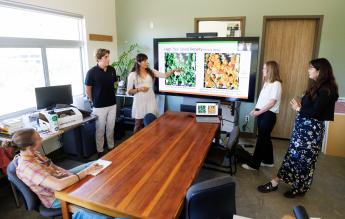
This summer, a group of students are embarking on a groundbreaking project: mapping tree canopy cover in California.
Tree canopies, which provide shade, can offset the heat island effect in cities. The effect is caused by buildings, roads and other human-made infrastructure absorbing and then re-emitting heat. In a warming climate, the heat island effect only intensifies, making cities hotter than ever.
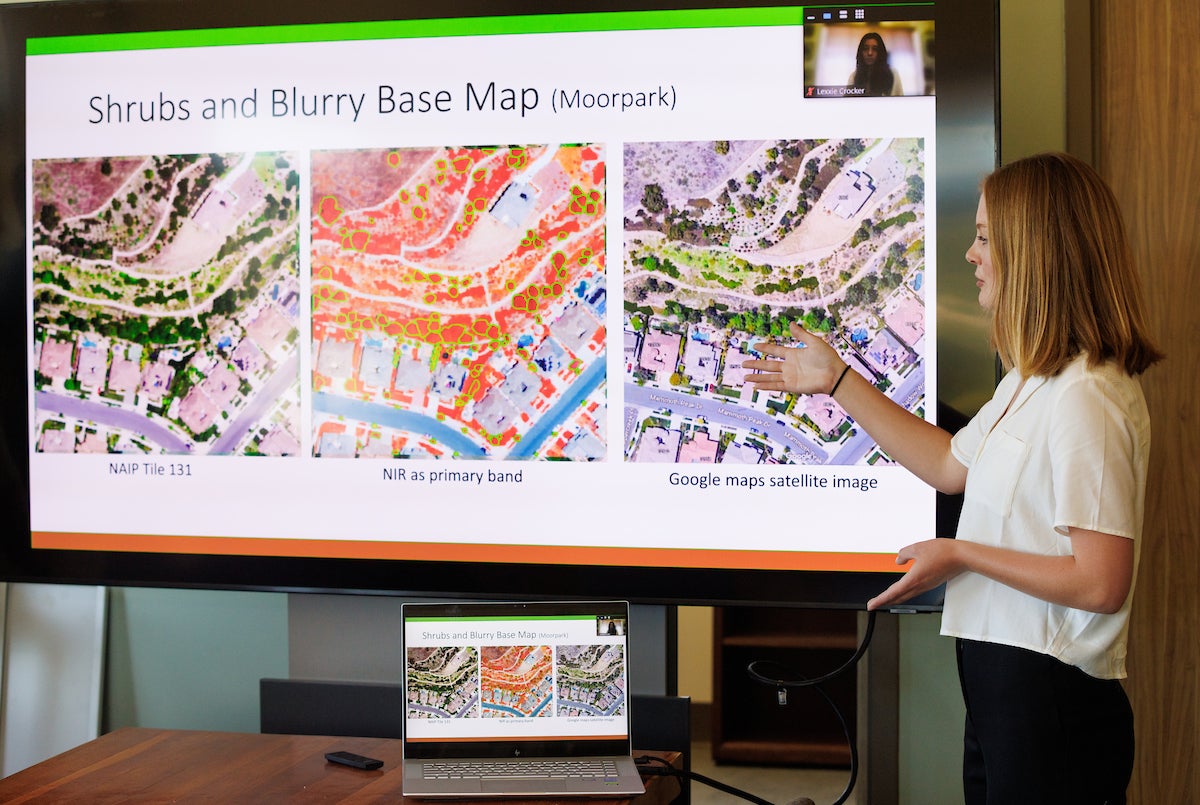
To offset this, the state of California aims to increase tree canopy cover by 10% in urban areas by the year 2035 — especially in underprivileged areas and areas with few trees. But no open-source data set exists that can provide an accurate baseline estimate. That’s where this project comes in.
The students involved are creating a public, open-source urban tree canopy map using geographic information systems (GIS) and an AI deep-learning model. They’re also writing a research paper to document their methodologies and share their discoveries with the world.
“With our map, city managers can say, ‘OK, here’s where our trees are, here’s where we don’t have trees and here’s where we’ve lost a lot of trees and need to replace them,’” said Cami Pawlak, a graduate advisor on the project who graduated with her master’s degree from Cal Poly in June. “Cities that have good canopy cover can be 10 degrees cooler than cities without it. It has a big impact in terms of stress on people and urban heat.”
At the ground level, students are digitizing images from the National Agriculture Imagery Program (NAIP) of hundreds of tree canopies across the state to make an image training library for artificial intelligence. The AI will then use the learning library of images to identify tree canopies in other areas, building a baseline estimate.
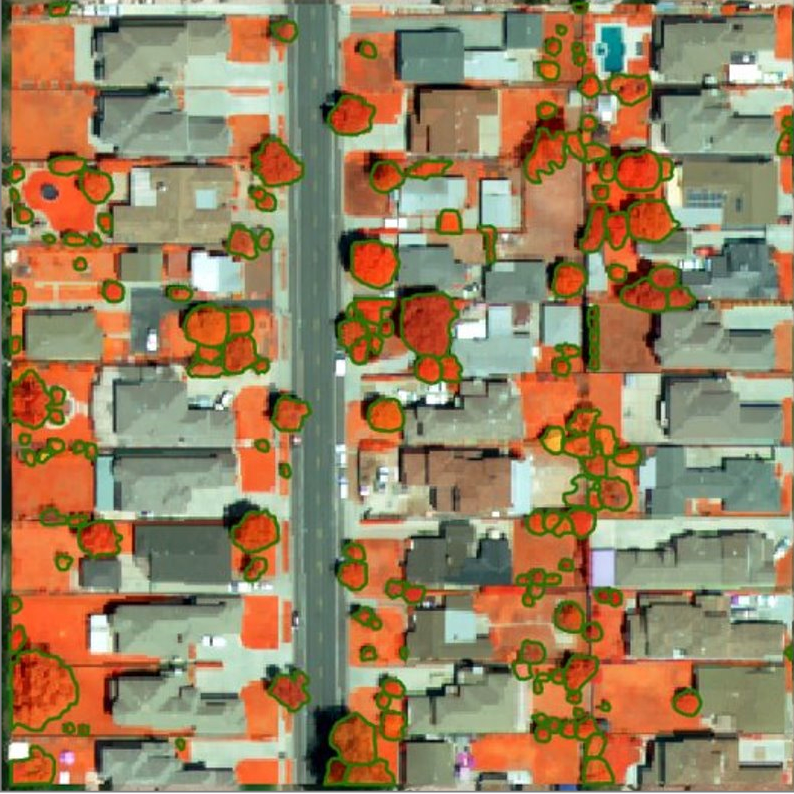
“It’s something you could never have humans do, but if you train a neural network, it will create decent estimates,” said Andrew Fricker, a geography professor who is advising the project. “Part of the process is refining a model and making it better.”
To start, each student has been assigned 100 training tiles and is digitizing each visible tree. Sara Arnold and Griffen Guizan, both fourth-year anthropology and geography majors, are using the programming language Python to create bar charts that show month, camera type, hour, climate zone, city area and city population for each tile.
“It is eye-opening to see which urban areas of California have lots of tree coverage and which do not,” Arnold said, adding that many of the tiles she has digitized are from wealthy neighborhoods with large trees shading the streets. “These large trees offset the urban heat island effect, making the areas cooler and more livable. However, my tiles that have been situated in highly urbanized areas like cities typically have very little canopy coverage.”
Fricker concurs, adding that tree cover tends to be scarcer in the poorest areas, exacerbating the effects of a warming climate.
“It’s a social and environmental justice issue,” Fricker said. “Part of this is helping to make underserved communities more resilient in the face of a changing climate.”
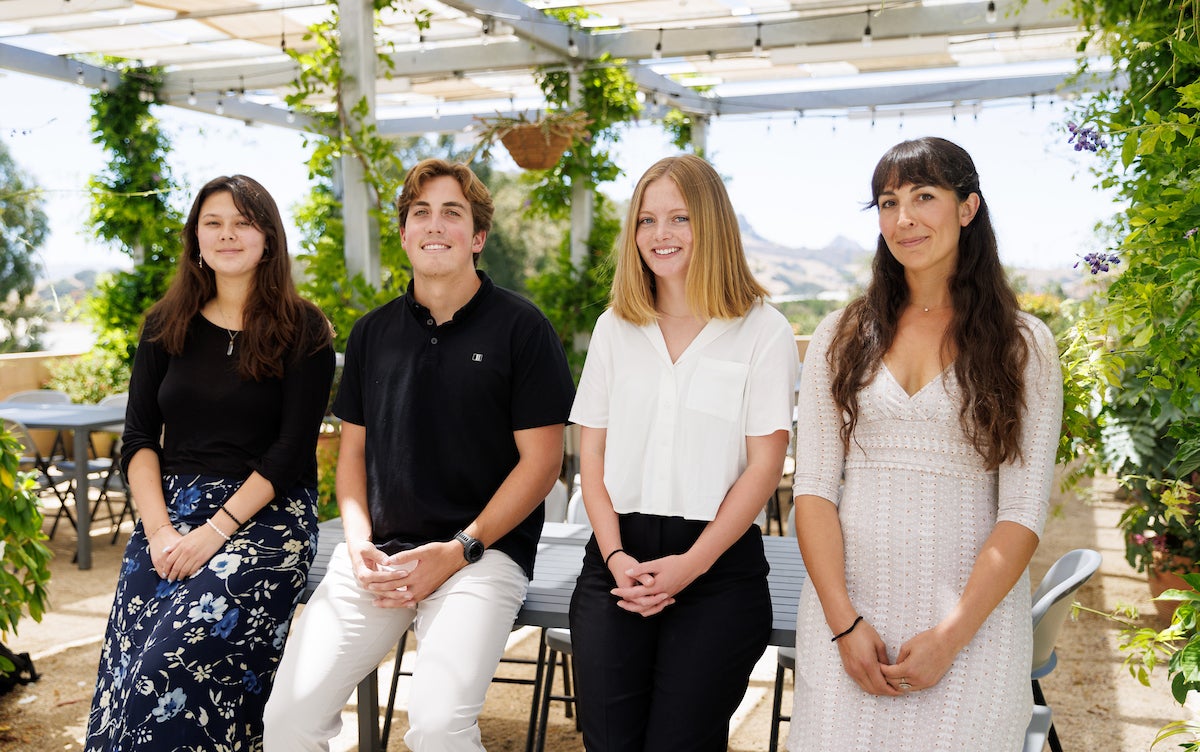
One of the team members, fifth-year landscape architecture student Jessica Baiza, has worked on parts of this project since January with a particular focus on canopy cover at public schools.
“Children are so vulnerable to extreme temperatures,” she said, adding that the project has led them to a disheartening discovery: most schools, regardless of the community’s income level, don’t have many trees. Instead of green spaces, many schoolyards feature lots of pavement. “This unfortunate reality exacerbates the heat island effect and contributes to flooding issues."
The canopy cover map is just one of the projects under the umbrella of Cal Poly’s Urban Forest Ecosystems Institute, which strives to address the need for improved management of California’s urban trees. The UFEI has interdisciplinary collaborators throughout Cal Poly in areas including computer science, economics and architecture.
“We are passionate about trees and their ability to increase the quality of the lives of people living in California’s urban areas. There are so many opportunities to help people through urban forest science,” said Matt Ritter, a biology professor and director of UFEI.
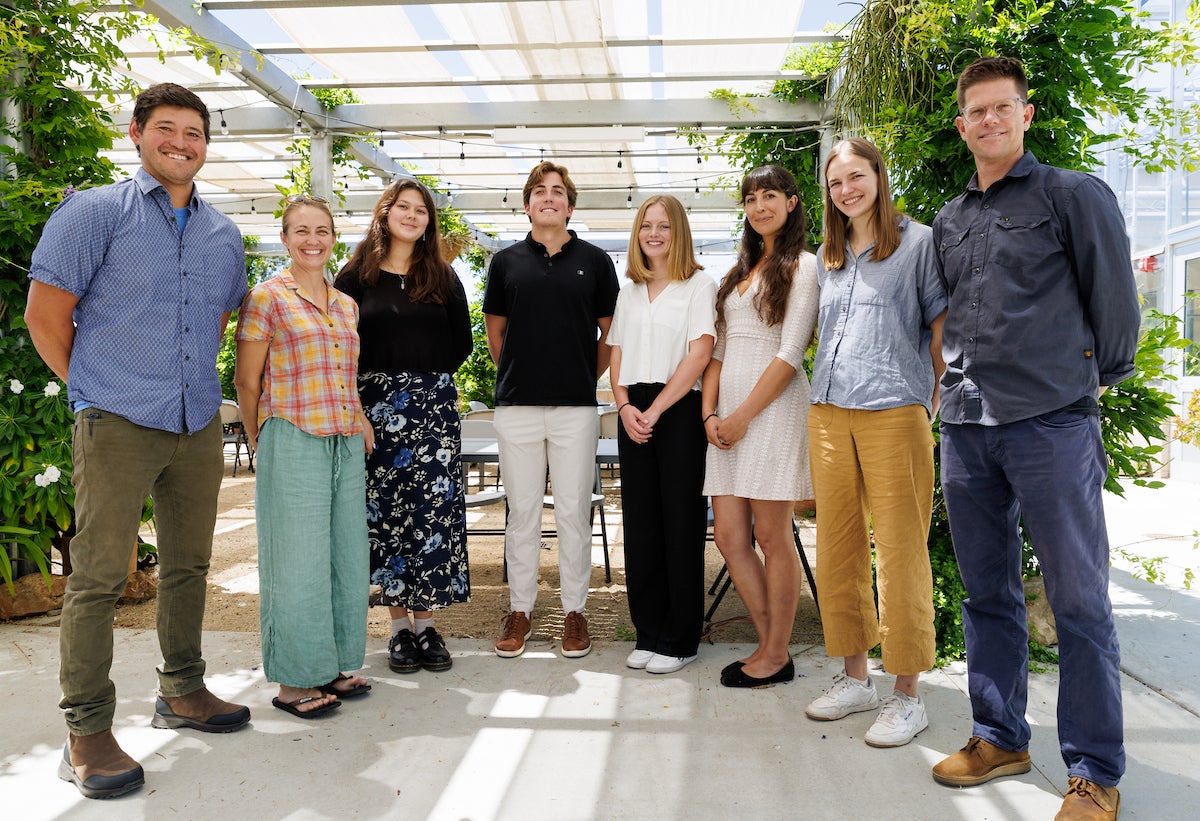
For Baiza, this project has helped her recognize the impact of landscape architecture and nature-based solutions on communities — and how she can be mindful as she pursues her career.
“I am confident that the knowledge and skills I have gained through this experience will guide me in making better informed decisions when designing landscapes not only within California's schoolyards but also in other communities facing similar challenges,” she said.
“I hope that my work in this project can serve as a catalyst for positive change, inspiring others to embrace nature-based solutions and sustainable practices. The well-being of our children and our environment depend on it.”
Want more Learn by Doing stories in your life? Sign up for our monthly newsletter, the Cal Poly News Recap!




